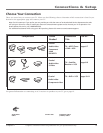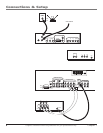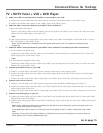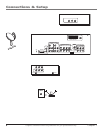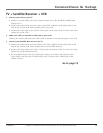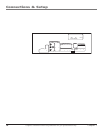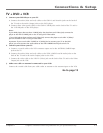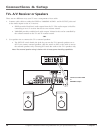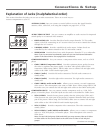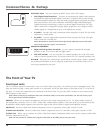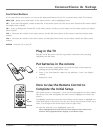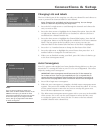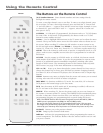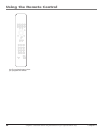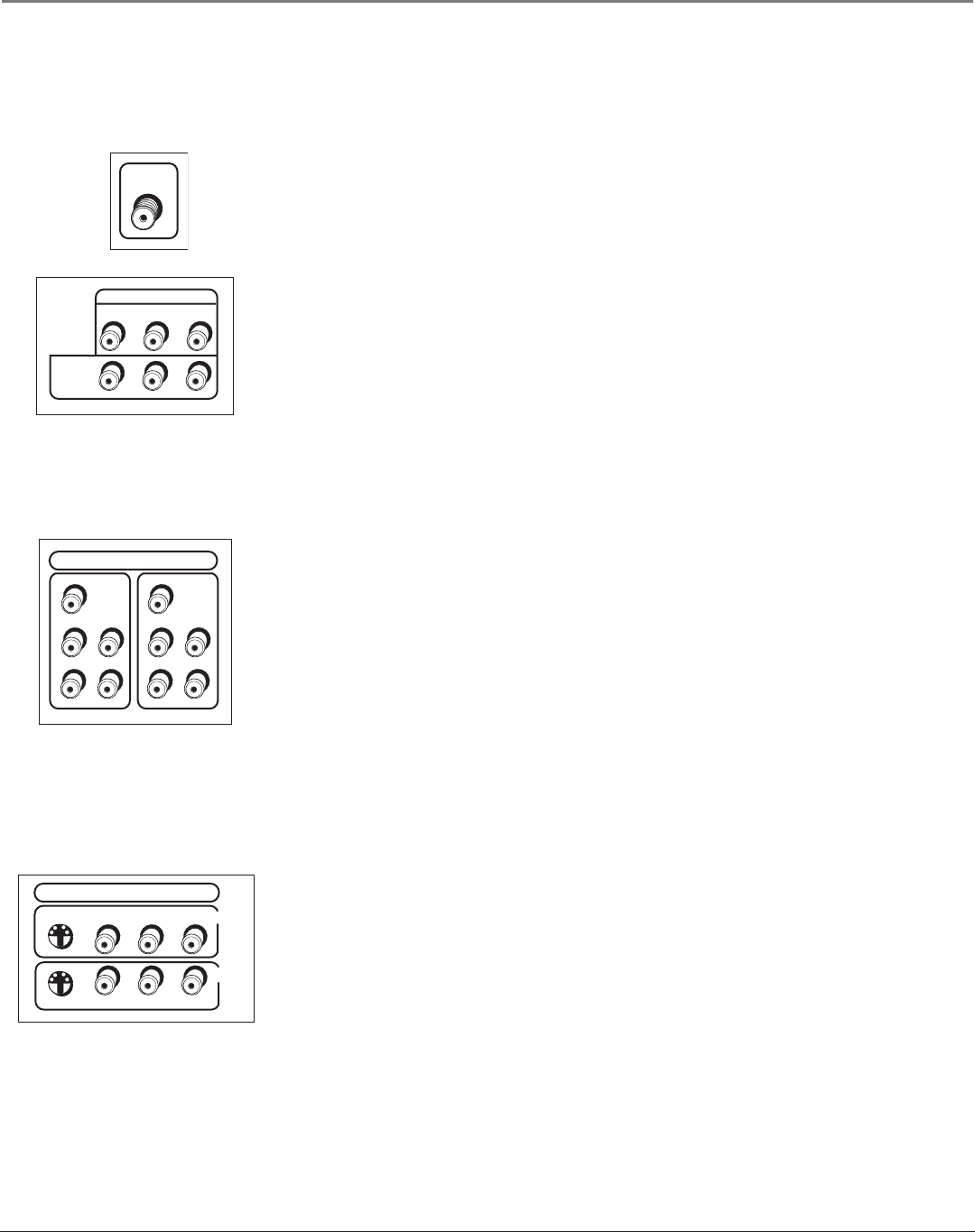
Connections & Setup
12 Chapter 1
Graphics contained within this publication are for representation only.
Connections & Setup
Chapter 1 13
Graphics contained within this publication are for representation only.
Explanation of Jacks (in alphabetical order)
This section describes the jacks you can use to make connections. There are several ways to
connect components to your TV.
ANTENNA/CABLE Lets you connect a coaxial cable to receive the signal from the
antenna, cable, cable box, or if using the examples on pages 6-11, a VCR.
AUDIO/VIDEO OUTPUT Lets you connect an amplier or audio receiver for improved
sound quality or an external video monitor.
• FIXED AUDIO L/R Provides xed-level audio output from the TV. This audio
output is ideal for connecting an A/V receiver when you want to control the volume
through the A/V receiver.
• VARIABLE AUDIO Provides variable-level audio output. Volume levels are
controlled by the volume controls on the TV and remote control.
• SUBWOOFER Provides lower bass audio frequencies from the TV to a subwoofer.
Note: If you’ve connected a subwoofer, make sure you set the External Subwoofer
option in the Sound menu. Go to page 33 for instructions.
COMPONENT INPUTS Lets you connect a component video source, such as a DVD
player.
• CMP1 Y PB PR (Component Video) Provides optimum picture quality because
the video is separated into three signals. Use three video-grade cables for the
connection. When using CMP1 Y PB PR, make sure to connect left and right audio
cables to the CMP1 L and R Audio Input jacks.
• CMP1 L (Audio) Provides left audio connection. The left audio connector is
usually white.
• CMP1 R (Audio) Provides right audio connection. The right audio connector is
usually red.
• CMP2 Y PB PR, and L and R Audio Allows you to connect a second component
video source. Their description is the same as CMP1 above. When using CMP2 Y PB
PR, make sure you connect the left and right audio cables to the CMP2 Audio jacks.
COMPOSITE INPUTS Lets you connect another component such as a VCR, DVD
player, or laserdisc player. Its AUDIO jacks are the same as described for CMP1 above.
• VID1 S-VIDEO Provides better picture quality than the video jacks (VID1 and 2
Video) because the color part of the picture is separated from the black and white
part of the picture. When using VID1 S-VIDEO, make sure to connect left and right
audio cables to the VID1 L/MONO and R Audio Input jacks.
• VID1 V (Video) Provides composite video connection. The video connector is
usually yellow.
• VID2 S-VIDEO, V and L/MONO and R Audio Allows you to connect a component
such as a VCR, DVD player, or laserdisc player. Their description is the same as
VID1 above.
Note: For each VID jack group (VID1 and VID2), you may connect either an S-Video
or Video cable. Do not connect both at the same time in either of the VID jack
groups.
Continues on next page...
AUDIO/VIDEO OUTPUT



